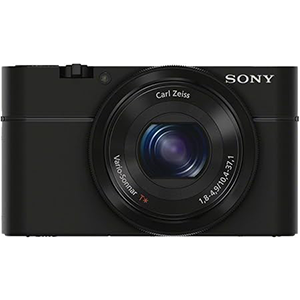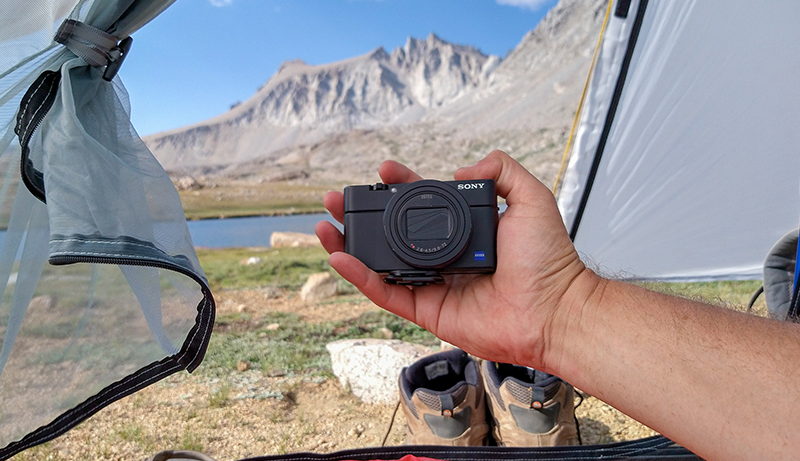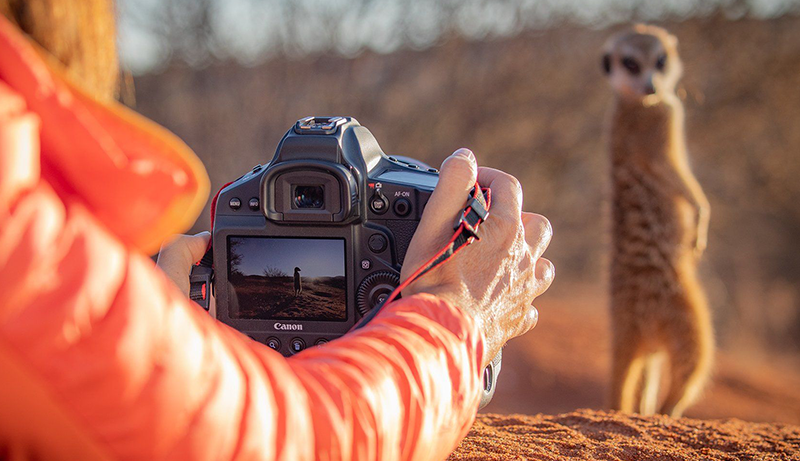When it comes to capturing stunning images in dimly lit environments, a compact camera with exceptional low-light performance can make all the difference. Whether you’re photographing a romantic evening out, a concert, or an intimate indoor gathering, the ability to shoot clear and vibrant photos in low-light conditions is crucial. The best compact cameras for low-light scenarios typically feature large sensors and fast lenses, which allow more light to reach the camera’s sensor, thereby reducing noise and improving clarity.
Advanced image processing technologies and optical image stabilization also play a pivotal role in enhancing low-light photography. Cameras equipped with these features can produce sharper images with less blur, even when handheld. Additionally, manual controls and high ISO capabilities provide more flexibility and control over your shots, ensuring you can adjust settings to suit the lighting conditions.
In this guide, we’ll explore top compact cameras renowned for their low-light performance, highlighting their standout features and how they can elevate your nighttime and indoor photography. Whether you’re a seasoned photographer or an enthusiastic hobbyist, finding the right compact camera will enable you to capture beautiful images in any lighting condition with ease.
1. Sony Alpha a6000

Sony has introduced a compact camera that offers professional-grade features and performance. At its core is a 24.3MP APS-C format sensor, paired with Sony’s advanced image processor, enabling the creation of high-quality, detailed image files. These files can be easily edited to enhance low-light performance. The APS-C sensor is significantly larger than those found in typical point-and-shoot cameras or smartphones, resulting in superior low-light image quality.
The included kit lens is sharp and versatile, though not particularly fast. However, as an interchangeable lens camera, it allows you to upgrade to faster lenses if needed. Being mirrorless, the camera also supports a variety of third-party adapters for different lens mounts, expanding your options for high-performance lenses.
With an ISO range of 100 to 25,600, the camera provides flexibility for a wide range of lighting conditions. Thanks to its high-quality sensor and image processor, digital noise is minimized even at higher ISO settings.
The camera features large, intuitive controls for quick access to essential functions, while the menu system is straightforward for more advanced settings. This makes it ideal for situations requiring fast adjustments in challenging lighting.
A bright electronic viewfinder and a tilting touchscreen provide flexibility in framing shots. The touchscreen also serves as the interface for menu navigation and certain controls.
In addition to its impressive photography capabilities, Sony, a leader in digital video, has equipped the camera with excellent video features. It offers Full HD 1080p recording along with a range of special recording modes, making it a versatile tool for both photo and video enthusiasts.
2. Sony Alpha 7 II

The Sony Alpha 7 II is a standout in the world of mirrorless cameras, offering a blend of advanced features and impressive performance. This camera is equipped with a 24.3MP full-frame sensor, which ensures high-resolution images with excellent detail and dynamic range. One of its most notable features is the 5-axis in-body image stabilization, a first for full-frame cameras, which significantly reduces blur from camera shake, making it easier to capture sharp images even in challenging conditions.
The Alpha 7 II also boasts a fast hybrid autofocus system that combines phase-detection and contrast-detection for quick and accurate focusing. This system is 30% faster than its predecessor, the Alpha 7, making it ideal for capturing fast-moving subjects. The camera’s build quality is robust, with a magnesium alloy body that is both lightweight and durable.
In terms of usability, the Alpha 7 II features a tilting LCD screen and an electronic viewfinder, providing flexibility in composing shots. It also supports a wide range of lenses thanks to its E-mount system, allowing photographers to choose the best lens for their needs.
Overall, the Sony Alpha 7 II is a versatile and powerful camera that caters to both amateur and professional photographers, offering excellent image quality, advanced stabilization, and fast autofocus in a compact and durable package.
3. Sony RX100

The Sony RX100, equipped with a 20.2MP 1-inch sensor, is designed for photographers who seek high performance and image quality in a compact camera. Its built-in f/1.8 3.6x Carl Zeiss Vario-Sonnar T* lens delivers outstanding optical performance, known for sharpness, contrast, and excellent correction of optical aberrations like flare and image degradation.
Carl Zeiss T* lenses are highly regarded for their precision and quality, ensuring superior image results even in challenging conditions.
Despite its small size, the RX100 offers well-placed, intuitive controls. It features a top plate dial and a control ring around the lens for quick access to basic settings, while the 3-inch viewscreen provides a clear interface for navigating deeper menu options and controls.
The RX100 also supports RAW file recording, a feature typically found in larger, more expensive cameras, allowing for greater flexibility in post-processing. With an ISO range of up to 6400, the camera handles low-light situations well, although it may not reach the extremes of some competing models. Still, it far surpasses basic point-and-shoot cameras in low-light capability.
The camera also includes manual focus for greater control over your shots. True to Sony’s reputation, video recording quality is excellent, and the RX100 comes with additional features like in-camera HDR and a panorama mode, making it a versatile tool for both still photography and video.
4. Nikon D7500

The Nikon D7500 DX-Format Digital SLR is a versatile and powerful camera designed for enthusiast photographers. It features a 20.9MP DX-format sensor and the EXPEED 5 image processing engine, which together deliver high-quality images with excellent detail and color accuracy. The camera’s ISO range of 100-51,200, expandable to 50-1,640,000, ensures great performance in various lighting conditions.
One of the standout features of the D7500 is its 8fps continuous shooting speed, making it ideal for capturing fast-moving subjects. The 51-point autofocus system with 15 cross-type sensors provides precise and quick focusing, enhancing the overall shooting experience. Additionally, the camera supports 4K UHD video recording, allowing users to capture high-resolution videos with impressive clarity.
The D7500 also boasts a 3.2-inch tilting touchscreen LCD, which offers flexibility in composing shots from different angles. Its robust build quality, combined with weather-sealing, ensures durability and reliability in various shooting environments.
Overall, the Nikon D7500 is a solid choice for photographers looking for a high-performance DSLR that offers advanced features, excellent image quality, and reliable performance in a compact and durable package.
5. Panasonic Lumix ZS50

This compact camera is all about quality, from its image sensor to its Leica Vario-Elmar lens. Despite its small size, it delivers impressive performance.
The camera features a 1/2.3″ sensor, which may be smaller, but the choice to limit it to 12.1MP improves low-light capability. By having fewer megapixels on the same sensor size, the individual pixels are slightly larger, enhancing low-light performance. While you sacrifice some resolution, you gain better image quality in challenging lighting conditions.
Its Leica zoom lens offers a 30x optical zoom, with the option to extend to 60x digitally. RAW recording is another premium feature, often missing in cameras with similar sensor sizes, giving you more control and flexibility in post-processing.
Panasonic, with its extensive experience in video technology, ensures that the camera’s video capabilities are top-notch. It supports Full HD 1080p recording, along with several additional modes for versatility.
The camera is equipped with practical physical controls, including a top plate dial and a ring around the lens for easy adjustments. The 3-inch viewscreen offers a clear display for navigating deeper menu options and camera settings.
A notable feature is the built-in eye-level viewfinder, a rarity in compact cameras. This addition is particularly useful for shooting in low light or fast-moving situations. It also allows for better hand-held stability, mimicking the shooting stance of larger cameras. Combined with built-in image stabilization, the camera helps deliver sharper, steadier results.
For advanced photographers, the camera also offers manual focus, macro focus, and time-lapse photography. Despite its small sensor, this is one of the best compact cameras available for low-light photography, delivering solid build quality and performance. A must-have for any photography enthusiast looking for a portable yet powerful camera!
Applications Where Strong Low-Light Performance Matters
Low-light photography comes in many forms. In addition to concerts and sports events, popular low-light scenarios include sunsets, twilight scenes, and indoor events like parties and weddings. In many of these settings, using a flash isn’t practical, so having one of the best compact cameras for low-light photography is essential to capture quality images.
Other situations that benefit from good low-light capability include light painting, astrophotography, moonlit landscapes, or cityscapes. Real estate photography often requires a camera with strong low-light performance, whether capturing dimly lit interiors or twilight shots of property exteriors.
Beyond the camera equipment, there are techniques that can enhance your ability to capture stunning low-light images. While relying on a fast lens, high ISO, or image stabilization helps, it’s not always enough. Mastering the ability to handhold at slower shutter speeds is a valuable skill, as is finding the right combination of settings to balance the Exposure Triangle. HDR photography is another technique that can help produce great images in low-light conditions.




Leave a Reply